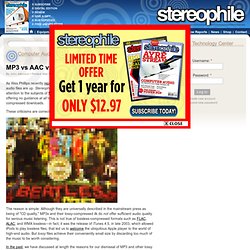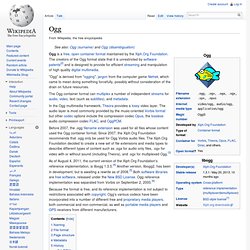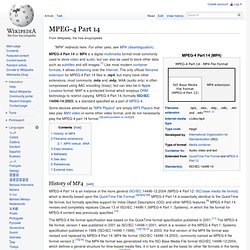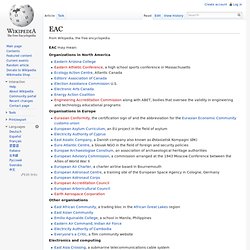

AVblog - hifi, audio, video, luidsprekers, HDTV, tv, HDMI. Music Served: Extracting Music from your PC. "Physical discs seem so 20th century!

" That's how I ended my eNewsletter review of the Logitech (then Slim Devices) Squeezebox WiFi music server in April 2006, and it seems that increasing numbers of Stereophile readers agree with me. In our website poll of January 5, 2008, we asked, "Are you ready for an audiophile music server? " The response to that question was the highest we have experienced: 32% of respondents already listen to music via their computer networks, many using home-brewed solutions, and 44% intend to.
We've published a lot of material on this subject in the last five years, and it seemed a good idea to sum it up in this article. Computer in the listening room? The first option is by far the simplest and cheapest. Many jukebox programs are available, the most popular being Apple iTunes, which runs on both PCs and Macs. These days, most PCs come with a motherboard that handles audio, doing away with the need for an internal or external soundcard.
MP3 vs AAC vs FLAC vs CD. As Wes Phillips recently reported on this website, CD sales are down and legal downloads of audio files are up.

Stereophile has been criticized more than once for not paying enough attention to the subjects of MP3 and other compressed file formats, such as AAC, and for offering no guidance at all to readers about how to get the best sound quality from compressed downloads. These criticisms are correct. We don't. The reason is simple: Although they are universally described in the mainstream press as being of "CD quality," MP3s and their lossy-compressed ilk do not offer sufficient audio quality for serious music listening. This is not true of lossless-compressed formats such as FLAC, ALAC, and WMA lossless—in fact, it was the release of iTunes 4.5, in late 2003, which allowed iPods to play lossless files, that led us to welcome the ubiquitous Apple player to the world of high-end audio.
Lossless vs Lossy The file containing a typical three-minute song on a CD is 30–40 megabytes in size. WavPack Audio Compression. Audio codec. Vorbis. Vorbis is a continuation of audio compression development started in 1993 by Chris Montgomery.[9][10] Intensive development began following a September 1998 letter from the Fraunhofer Society announcing plans to charge licensing fees for the MP3 audio format.[11][12] Vorbis project started as part of the Xiphophorus company's Ogg project (also known as OggSquish multimedia project).[13][14] Chris Montgomery began work on the project and was assisted by a growing number of other developers. They continued refining the source code until the Vorbis file format was frozen for 1.0 in May 2000[1][2][15] and a stable version (1.0) of the reference software was released on July 19, 2002.[16][17][18] Name[edit]
Ogg. "Ogg" is derived from "ogging", jargon from the computer game Netrek, which came to mean doing something forcefully, possibly without consideration of the drain on future resources.

Before 2007, the .ogg filename extension was used for all files whose content used the Ogg container format. Since 2007, the Xiph.Org Foundation recommends that .ogg only be used for Ogg Vorbis audio files. The Xiph.Org Foundation decided to create a new set of file extensions and media types to describe different types of content such as .oga for audio only files, .ogv for video with or without sound (including Theora), and .ogx for multiplexed Ogg.[3] Naming[edit] It is sometimes assumed that the name "Ogg" comes from the character of Nanny Ogg in Terry Pratchett's Discworld novels, but the Ogg developers say that is not true.[7] Ogg is derived from ogging, jargon from the computer game Netrek, which came to mean doing something forcefully, possibly without consideration of the drain on future resources.
MPEG-4 Part 14. Some devices advertised as "MP4 Players" are simply MP3 Players that also play AMV video or some other video format, and do not necessarily play the MPEG-4 part 14 format.[2][need quotation to verify][3] History of MP4[edit] MPEG-4 Part 14 is an instance of the more general ISO/IEC 14496-12:2004 (MPEG-4 Part 12: ISO base media file format) which is directly based upon the QuickTime File Format.[4][5][6][7][8] MPEG-4 Part 14 is essentially identical to the QuickTime file format, but formally specifies support for Initial Object Descriptors (IOD) and other MPEG features.[9] MPEG-4 Part 14 revises and completely replaces Clause 13 of ISO/IEC 14496-1 (MPEG-4 Part 1: Systems), in which the file format for MPEG-4 content was previously specified.[10] The MP4 file format defined some extensions over the ISO Base Media File Format to support MPEG-4 visual/audio codecs and various MPEG-4 Systems features such as object descriptors and scene descriptions.

Advanced Audio Coding. From Wikipedia, the free encyclopedia AAC may refer to:

EAC. From Wikipedia, the free encyclopedia EAC may mean: Organizations in North America Organisations in Europe Eurasian Conformity, the certification sign of and the abbreviation for the Eurasian Economic Community customs unionEuropean Asylum Curriculum, an EU project in the field of asylumElectricity Authority of CyprusEast Asiatic Company, a Danish company also known as Østasiatisk Kompagni (ØK)Euro-Atlantic Centre, a Slovak NGO in the field of foreign and security policiesEuropae Archaeologiae Consilium, an association of archaeological heritage authoritiesEuropean Advisory Commission, a commission arranged at the 1943 Moscow Conference between the Allies of World War IIEuropean Air Charter, a charter airline based in BournemouthEuropean Astronaut Centre, a training site of the European Space Agency in Cologne, GermanyEuropean Astronaut CorpsEuropean Accreditation CouncilEuropean Arboricultural CouncilEarth Aerospace Corporation Other organisations Electronics and computing.

Free Lossless Audio Codec. Comparison of audio formats. General information[edit] Notes[edit] The 'Music' category is merely a guideline on commercialized uses of a particular format, not a technical assessment of its capabilities.

(For example, in terms of marketshare, MP3 and AAC dominate the personal audio market, though many other formats are comparably well suited to fill this role from a purely technical standpoint.)First public release date is first of either specification publishing or source releasing, or in the case of closed-specification, closed-source codecs, is the date of first binary releasing. Many developing codecs have pre-releases consisting of pre-1.0 versions and perhaps 1.0 release candidates (RCs), although 1.0 may not necessarily be the release version.Latest stable version is that of specification or reference tools.If there happens to be OSI licensed software available for a particular format, this does not necessarily permit one to use said codec free of charge.